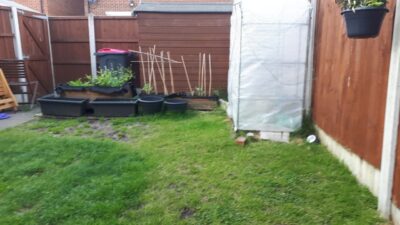Sometimes starting big projects like gardening can seem daunting and overwhelming, but we are here to ease those stresses and reassure you that growing your own food doesn’t have to be burdensome, and provide you with some top tips to get started.
First Steps
- Assess your space
- Collect your tools
- Source your seeds
Assessing Your Growing Space
It is important to understand how much space, either in your garden/home/allotment etc, you have in order to make an informed plan for growing and rearing your food.
You will need to consider:
- How many family members are you feeding? Are you also growing for friends?
- Do you want to rear animals? Maybe chickens?
- What food do you actually enjoy eating? Don’t grow vegetables that you don’t like or eat very often.
- How much sun does my garden/allotment get?
- Is my space mainly patio or lawn? If so, what suitable alternatives are there to vegetable patches?
- Do you have wooden fences that you can use for vertical growing?
Based on your assessment of your space you can begin to plan how to utilise it best, for example if you have a generally shady garden, maybe consider root vegetables or leafy greens as a priority as they are the most shade tolerant vegetables.
Collecting The Right Tools
There are so many different gardening tools out there but not all of them will be necessary for you and your gardening style, take a look through the list to figure out which tools you will need.
Gardening Fork – Very versatile tool, which can be used for digging compacted soil and also for turning compost piles and transferring mulch. One of the most popular tools found in a gardeners shed. Also hand sized versions may be more appropriate for smaller gardens.
Wheelbarrow – Helpful for larger gardens and allotments to transfer things such as soil or compost around, and avoid too much heavy lifting.
Spade – What a classic. An essential tool for digging holes for plants, edging, and lifting and moving soil.
Hand Trowel – One of the most important hand tools for everyone, no matter the size of the garden. Used for moving bedding plants and herbs, planting into containers, and taking out weeds.
Rake – The vegetable patch version of a broom, there to help sweep up all the leaves and debris to add to the compost, and keep your growing space tidy.
Other essential tools to consider include: gardening gloves, watering can, gardening hose, kneeling pillow and plant tags.
Next Steps
All that is left is sourcing seeds and planning your growing calendar around the seasons. The UK used to buy 80% of its perennials in the autumn, because this is the best time to plant. Nature is on our side; rain is more plentiful, and plants establish quickly ready to thrive in the coming spring growing season, so if you can start in autumn then do so! We now buy 80% of our perennials in the spring because this suits the garden centres. By this time, we are already behind schedule, the planning stage has been missed and we are overwhelmed by what is not achievable in a short space of time, and we are driven to the retailers.
The PFFA can inspire you to trust your instincts and reject the accepted conditioning and sense of overwhelm from the myth that growing food is a complex process and requires commercial products and strictly laid out processes to succeed. You can regain a sense of nature’s seasons and how to work with them. The ability to assess any existing growing space and understand its strengths, weaknesses and potential will be a great place to start.




